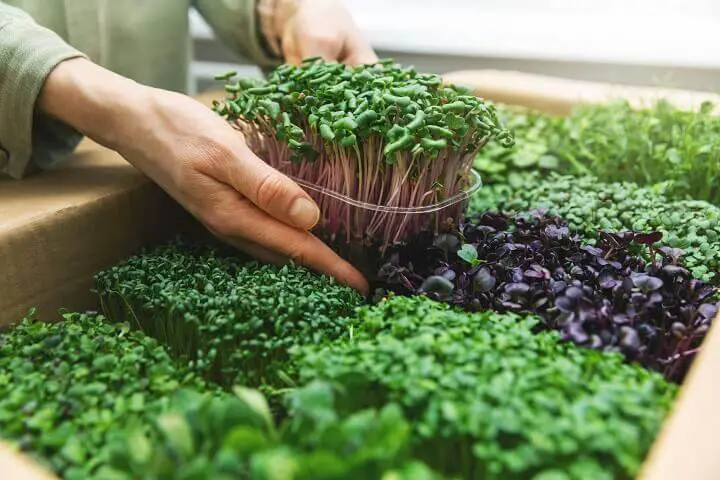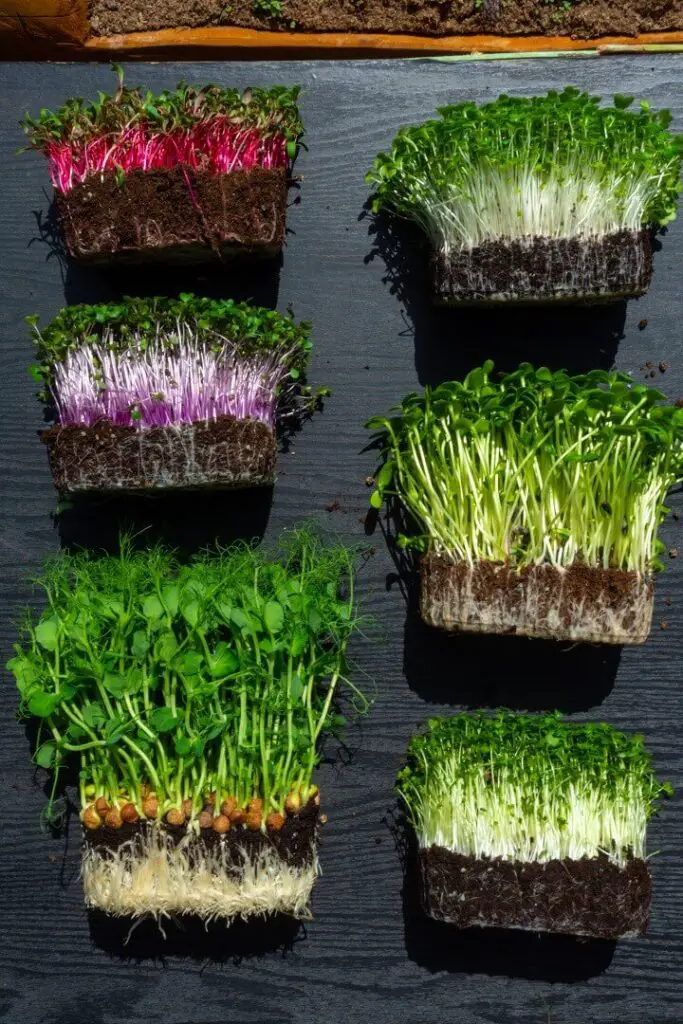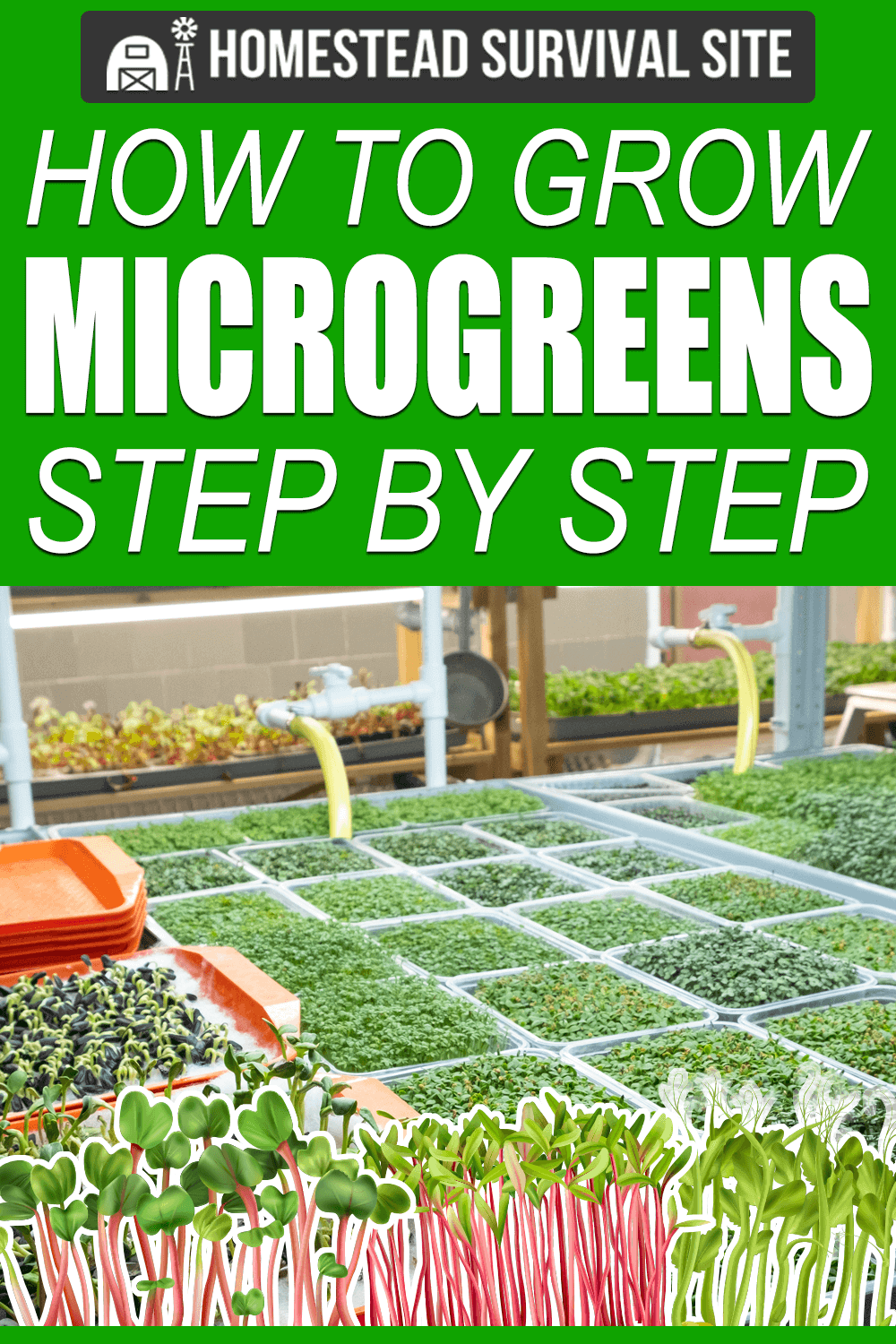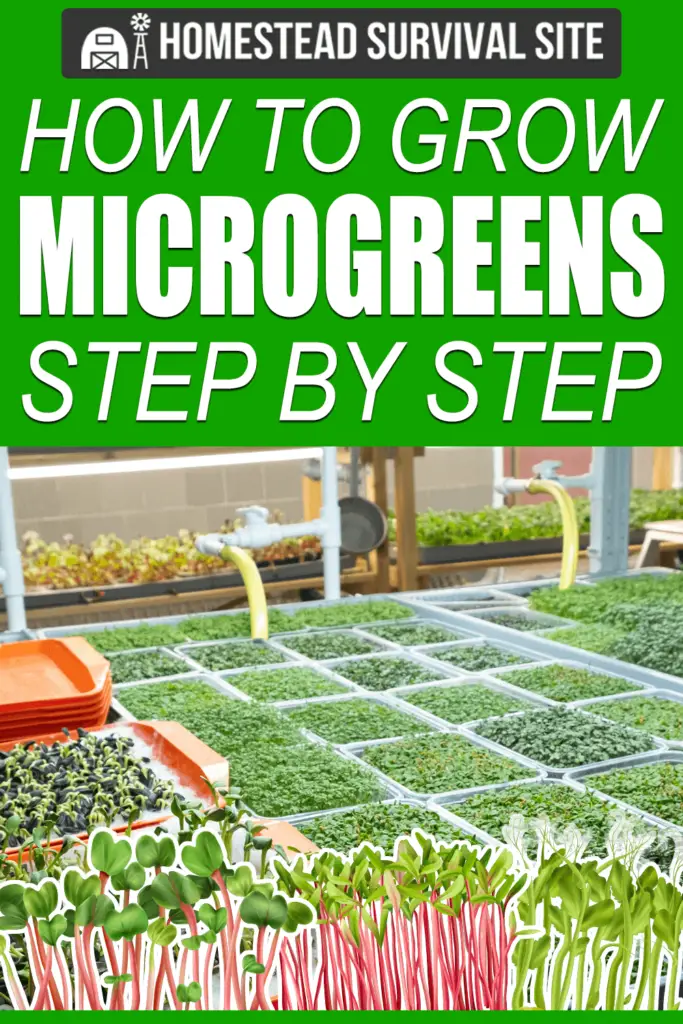Estimated reading time: 6 minutes
Many people equate microgreens with “hippie culture” or “new age” lifestyles. Microgreens received the bulk of their recognition from these two genres or periods. But the truth is that the benefits of adding microgreens to your regular diet are worth looking into for people of all lifestyles and backgrounds.
What are Microgreens?
A common misconception is that sprouts and microgreens are the same things. They may come from the same seeds, but sprouts are germinated seeds that haven’t formed their leaves yet. They are also cultivated and used in a slightly different manner than microgreens.
Microgreens are tiny plants with their first set of leaves that are from one to three inches tall. They are basically baby plants that fall into a category somewhere between sprouts and greens. Even though they are “greens,” microgreens can’t be classified solely as vegetables. The tender, young greens come from grains, herbs, vegetables, and some flowers.
Want to save this post for later? Click Here to Pin It On Pinterest!
Why You Should Be Growing Microgreens
Nutritional Value
Some studies from the USDA (United States Department of Agriculture) indicate nutritional value from tiny microgreens may exceed that from the same mature plant. Therefore, it is possible to get the majority of your daily nutrient needs from a very small serving of microgreens. This is in comparison to a couple of servings of their full-sized version.
Fiber-rich microgreens are high in vitamin K, which helps with lowering blood pressure. They are also full of many other vitamins, minerals, and compounds. This combination shows promise for reducing cholesterol and fighting cancer and heart disease.
Flavor
For such tiny plants, microgreens pack a hefty punch of flavor. Most of the microgreens will taste like the full-grown version but stronger. Since the 1980s, chefs from all over the world have added these powerhouse plants to their dishes.
Minimal Investment
There are no big equipment purchases necessary when getting into growing microgreens. Here is all you will need to get started:
- Trays or containers – flat trays are best, but any container with drain holes works
- Growing medium – organic soil or soilless substances such as coconut coir
- Spray bottle – a misting setting is preferred
- Seeds – choose seeds from a reputable source
- Water – don’t use distilled or purified water
- Light – either direct sunlight or artificial lighting
- Time and patience – 7 to 14 days is the average growing time needed
Easy to Grow
There is not a lot of skill or knowledge required to start growing microgreens. They are a great introduction to the world of greens and gardening for family members of all ages. The short length of time required to harvest a bowl full of greens is another benefit. 7 – 14 days is not too long of a time investment for even the most impatient new grower.

How to Use Microgreens
The most common reason people confuse microgreens and sprouts is related to how they are used. They can almost always be substituted, except when cooking with heat.
If an uncooked recipe calls for sprouts, you can use microgreens instead. In cooked or heated dishes, it is best to add them once the heat is off. This helps maintain both nutritional value and taste.
Microgreens are a smaller, mightier version of their full-sized counterparts. It is a good idea to do a taste test before adding microgreens for the first time. Their more concentrated flavor could overpower a dish with more subtle flavors. A little can go a long way when it comes to microgreens.
Some popular ways to use your microgreens include:
- Blended into smoothie recipes
- Mixed into salads
- Egg dishes
- Sprinkled as a topping on meat, fish, pasta, and soup dishes
- Added as a sandwich fixing for both texture and flavor
- Used as a dip or hummus garnish
Best Microgreens to Grow
There is a wide range of seeds that can be used for growing microgreens. But be careful to make sure they aren’t poisonous, as plants belonging to the nightshade family are hazardous. This includes eggplant, peppers, tomatoes, and potatoes. The fruits or vegetables are safe to eat, but the plants, sprouts, or greens can be deadly.
Most seeds aren’t marketed as “‘microgreen seeds” and won’t have specific directions on how to grow them as such. But there are some companies that offer single seeds or mixes designed for microgreens. It is a good idea to familiarize yourself with the types of microgreens you want to grow and add to your diet.
Some popular microgreens to grow yourself include:
- Alfalfa
- Amaranth
- Anise
- Arugula
- Basil
- Beans
- Beets
- Broccoli
- Cabbage
- Cauliflower
- Celery
- Chard
- Chicory
- Chives
- Cilantro
- Cress
- Dill
- Endive
- Fennel
- Garlic
- Kale
- Leeks
- Lentils
- Lettuce
- Mustard
- Onion
- Peas
- Quinoa
- Radicchio
- Radish
- Spinach
- Watercress

How to Grow Microgreens
- Choose a flat container with adequate drain holes. Place it in a tray or other like-sized container to catch any excess water.
- Fill the container with your choice of growing medium. Press firmly to create a flattened, level surface.
- Sprinkle your seeds over the surface of the container/growing medium. Try to keep them from stacking on top of each other. Cover lightly with a layer of soil.
- Using the spray bottle, mist lightly until well saturated. Be careful not to disturb the seeds.
- Start the germination/blackout period by placing the container in a dark place for about 5-6 days. If you don’t have a dark place for the container, you can leave it on the counter with a paper towel blocking the light.
- Keep the soil moist by misting twice a day before returning it to the dark place or recovering it.
- Your seeds will begin germinating after about a week and start forming long thin stems. It is now time to bring them back into the light.
- For a grow light setup, provide 12-15 hours of light and approximately 9-12 hours of darkness.
- Natural daylight is also effective. Place the container in a sunny window with at least 8 hours of sunlight, turn daily.
- Continue watering your microgreens at least once a day, twice if needed.
- Once the greens have reached about 2-3 inches, they are ready for harvest. Cut the tiny plants at soil level and store them in the refrigerator for up to a week.
Start Growing Microgreens Today
There is no best season or time to start your successful microgreen growing experience. They are simple to grow, have easy-to-find components, and are a minimal investment. Get your children and family members involved and start growing microgreens today.
Like this post? Don't Forget to Pin It On Pinterest!











